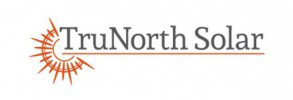String Inverters vs Micro-inverters vs Power Optimizers – which is best for your home or business solar energy system?
If you are considering a solar energy system for your home or business, one of the key decisions to be made is the type of inverter to install. Inverters convert the DC electricity that your solar panels produce into appliance-friendly AC electricity. After the panels themselves, inverters are the most important equipment in your solar power system.
While marketing professionals will debate which inverter is best, our focus at TruNorth Solar is to align our business practices with our values when recommending your inverter.
Safety, value to the customer, compatibility, reliability and efficiency top that list.
There are three main inverter options available for residential and commercial solar energy installations. These are string inverters, micro-inverters and module level power optimizers. String Inverters are generally the most cost effective approach and most useful with a roof that has no shade. However the string design does come with a risk of not being able to control the energy output of the system. A string of solar panels will only produce as much electricity as its least productive panel – if one or more of your solar panels is shaded during any part of the day, the power output from that entire string would be reduced to its level. For this reason, if your solar panels are installed facing different directions or there is variable shading, a string inverter may not be a good choice.
Micro-inverters are installed on each individual panel in a solar energy system. They convert the DC electricity from your solar panels into AC electricity on your roof, with no need for a separate central inverter. In many cases the micro-inverters are integrated into the solar panel itself, but they may also be mounted next to the panel on the mounting system.
One of the major advantages of micro-inverters is that they cancel out the negative impacts of partial or complete shading. Because the DC-AC electricity conversion takes place at each panel, there is no “bottleneck” when one panel’s production decreases. Micro-inverters also allow you to monitor the performance of individual solar panels. While a solution in many applications, micro-inverters can expose customers to a greater risk of replacing essential parts at a higher cost.
Power optimizers are also located at each panel, and are usually integrated into the panels themselves. However, instead of converting the DC electricity to AC electricity at the panel site, they “condition” the DC electricity and send it to a string inverter. This approach results in higher system efficiency than a string inverter alone.
And similar to micro-inverters, power optimizers reduce the impact of panel shading on system performance, and also offer panel performance monitoring. Systems that use optimizers are typically more affordable than those that use micro-inverters.
One of the most elegant solutions we often recommend for our TruNorth Solar customers is the SolarEdge inverter + power optimizer solution which accomplishes monitoring, advanced safety functions, and efficiency. https://www.solaredge.com/us/products/overview#/
With the Solar Edge inverter + power optimizer the customer is able to learn their solar system’s production on a granular level in real time. If repairs are ever necessary, they are easy to pinpoint. Power generating capacity can be maintained at peak performance.
As each solar installation is unique, our TruNorth Solar Energy Consultants and design team will provide a thoughtful and thorough analysis of your property and assist you with finding the optimal solar inverter choice for your project.
To get started maximizing your solar energy potential, schedule a site visit with our TruNorth Solar Energy Consultants at 612.888.9599 or www.TruNorthSolar.
